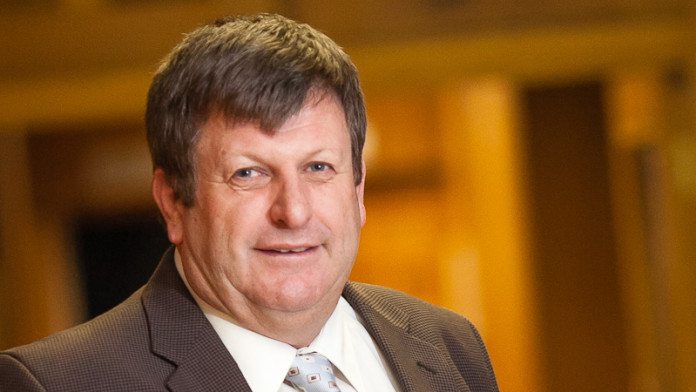
HARMONY Gold had prioritised paying down debt among its capital allocation plans, but said that once it had achieved this – probably by the year-end – it would divide its cash between dividends and production growth.
“The priority is to fix up the balance sheet in terms of our debt,” said Peter Steenkamp, CEO of Harmony Gold on the sidelines of the Joburg Indaba on October 5. “We need to get flexibility and we hope to do this by year-end,” he said.
“We then want to become a dividend payer but at the same time we can’t shrink ourselves into a small company, so we need a balance by acquiring or co-developing. We need to find the right assets to structure our portfolio,” said Steenkamp.
In its financial year ended June 30, Harmony cut net debt 54% to just over R1bn. This left it with R1.3bn in cash and some R3.4bn in debt facilities. This compares to facilities of R900m a year ago and cash of R1.1bn.
An improvement in cash flow also made room for the payment of the dividend of 50 cents/year which it said was “prudent”. It represents a 0.8% dividend yield.
Harmony Gold said on August 11 that it wanted to grow annual production by 50% to 1.5 million ounces through acquisitions, some of which could be in Africa.
A month later, it announced plans to invest $180m by doubling the size of Hidden Valley, its Papua New Guinea mine that it shares in joint venture with Newcrest Mining. Newcrest is to sell its 50% stake in Hidden Valley to Harmony for $1.
Harmony had planned to sell Hidden Valley which had been loss-making, but Steenkamp said the firm had struggled to find a buyer whilst the cost of putting the mine on care and maintenance or in getting a closure certificate would have been too great a drain on its cash and company resources.
“So we decided it is something we could invest in,” said Steenkamp. “We looked at it in detail; we went for some external help, and couldn’t find any flaws in our thinking.”
Steenkamp said in September that Hidden Valley had potential to contribute approximately 180,000 oz/year at an all-in sustaining cost of less than $950/oz within the next three years.
It also said the life of mine of Hidden Valley would be extended by seven years. The current life of mine was estimated to be between three and six years, according to Harmony Gold’s 2015 annual report.
As of June 30, Hidden Valley had an estimated mineral reserve of 1.4 million oz at 1.6 grams per tonne (g/t) and some 27 million oz of silver at a grade of 31g/t. The estimated mineral resource includes four million oz of gold at 1.6g/t and 73 million oz of silver at 29g/t.
Hidden Valley was loss-making in Harmony’s 2015 financial year following the failure of the overland conveyor and a safety stoppage as a result of a fatality at the mine which led to lower gold production. Harmony said it would restructure the mine which would have shortened its mine life.
“Technically there is nothing wrong with developing this project,” said Steenkamp. “The issues around it seemed to have been resolved,” he said.
ACQUISITIONS
In seeking growth through acquisition, Steenkamp said a number of potential targets had been progressed, some of which were listed companies whilst others were single assets held by other companies.
“Our acquisitions are getting some traction,” he said, adding however that the group was not in the running for Barrick Gold’s 64% stake in UK-listed Tanzanian gold producer, Acacia Mining.
“Any deal has to improve the margin, bring the overall cost margin down. So we won’t blindly make acquisitions. We are not looking for a Mercedes, we’re looking for a reliable Toyota,” said Steenkamp.
Harmony is also developing the first phase of Wafi Golpu in which some 3.6 million ounces of gold will be produced – a project that is estimated to cost about $2.6bn, equal to R36bn on an 100% basis. It shares the project with Newcrest.








